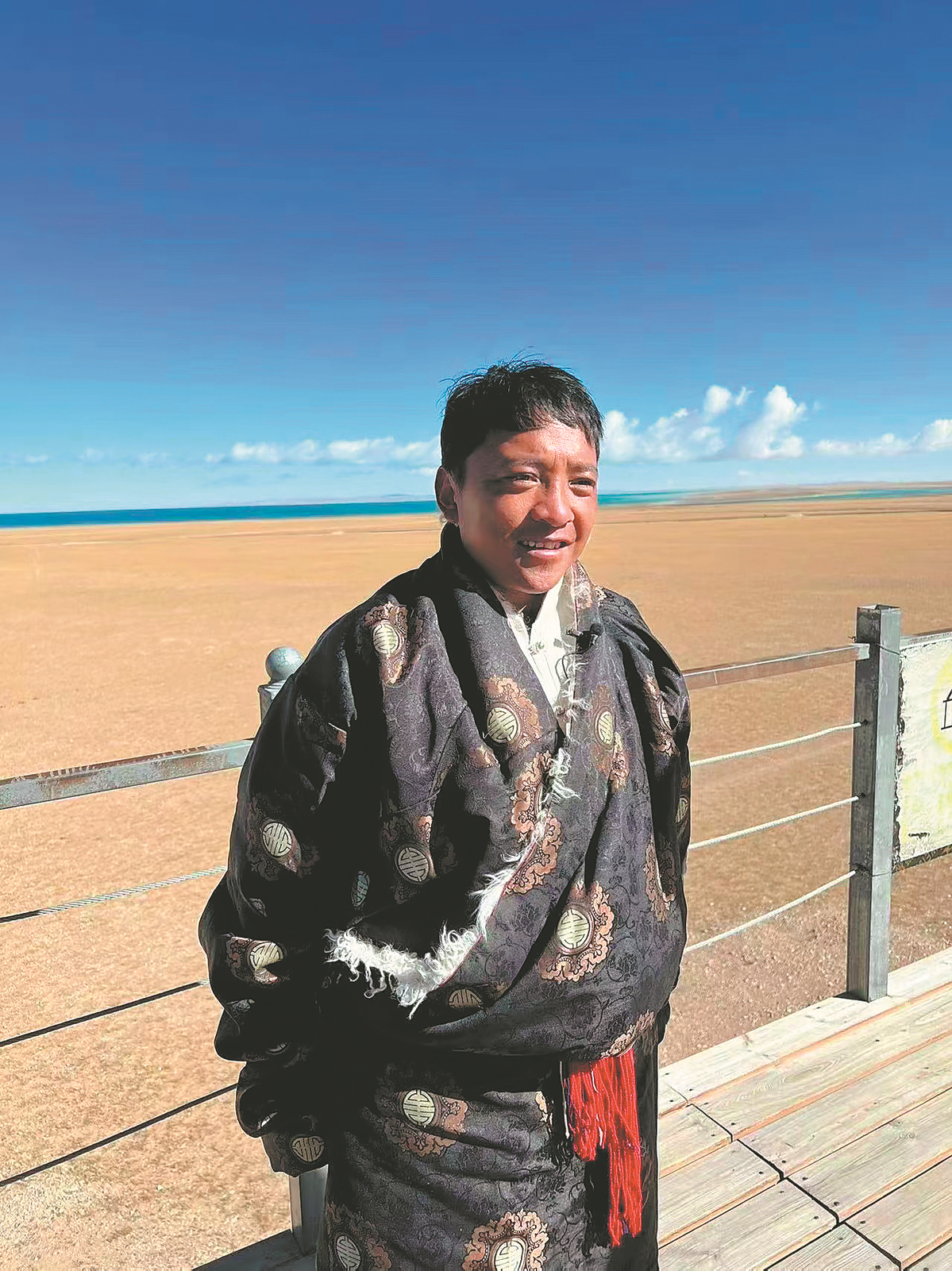A wildlife worker's insights into nature
Updated: 2024-09-02 (chinadaily.com.cn)  Print
Print 



Tsultrim Tharchen
Tsultrim Tharchen, wildlife ranger in the Xizang Serling Tso National Nature Reserve, Xizang autonomous region
I have been working as a wildlife ranger in the Xizang Serling Tso National Nature Reserve for 15 years.
This reserve is part of the Three-River-Source National Park located on a plateau at an altitude of nearly 5,000 meters. It is home to many endangered species, including Tibetan antelopes, snow leopards and black-necked cranes.
We closely monitor these animals throughout the year by patrolling the reserve, recording the number and species of animals we observe, and taking photographs. We report our findings regularly to the county's forestry and grassland bureau. We also keep a close eye on any injured animals and stop illegal entry or poaching.
November is the mating season for Tibetan antelopes, which is a busy time for us. We often set up tents near the mating grounds to observe and protect the animals.
Sometimes male antelopes fight over females, and we may need to collect and dispose of the bodies of those who die. This is important because they could be used by unscrupulous individuals who would sell them elsewhere. If such individuals become aware of a potential profit, it could lead to increased poaching.
At times, we find injured antelopes, including young ones during the birthing season around July. In cases of orphaned calves, we take them back to the reserve station and feed them with milk until they are strong enough to eat grass. Usually it takes about 15 days before releasing them back into the wild.
To minimize our impact on the environment we use motorcycles for patrolling instead of cars.
I remember that around 2010, Tibetan antelopes would flee at the sight of a motorcycle. However, through years of spreading awareness of protecting animals by the county government and local communities, now the antelopes are more familiar with our presence, and we can sometimes get within 100 meters of them to take clear photographs.
Local villages have many traditions and stories about animals, including one about a single-horned Tibetan antelope — considered the chosen one and the leader of the herd. They believe all other antelopes must respect it.
Observing the growth rings on an antelope's horns can provide an indication of its age. Each ring corresponds to a quarter of a year, with four rings marking one year. This suggests that the average life span of a Tibetan antelope is between 15 and 20 years.
Modern technology has also become a valuable tool in monitoring wildlife. Numerous night-vision cameras have been installed in the Three-River-Source National Park and Changtang National Nature Reserve. Drones are also used for filming, although animals are not yet very comfortable with them and tend to flee when they hear their sound.
Unfortunately, some tourists are eager to capture photos of running antelopes and chase them using cars or drones. This behavior is harmful and frightening for the animals. We talk to such tourists and tell them they should avoid disturbing the animals and should not drive on the fragile grassland, which is vital for the animals' food supply.
For many people, snow leopards are mysterious creatures. In 2018, we started using night-vision cameras to monitor their activity. Experts estimate that a snow leopard's range could be as large as 20 kilometers. Therefore, we deploy three to five cameras within each assumed territory of this size.
Finding these territories is not difficult. We have observed that in areas inhabited by Tibetan argali sheep, there is typically a snow leopard nearby. Using night-vision cameras, we have captured approximately 60 snow leopards within the reserve.
In the late evenings or early mornings, snow leopards may occasionally attack livestock in local villages. We usually climb onto rooftops and make loud noises to scare them away without harming them.
The government provides insurance for the villagers' livestock, so they can claim compensation if attacked by a snow leopard.
As a final note, the roars of snow leopards are surprisingly adorable, contrasting with their fierce appearance.
Tsultrim Tharchen talked to Yan Dongjie. Zhang Lina and Palden Nyima contributed to this story.








